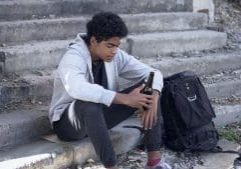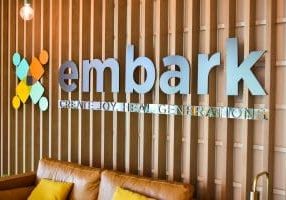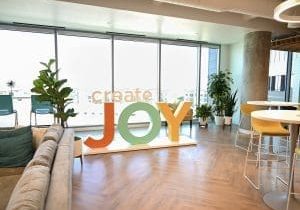SMART Recovery
SMART Recovery has been proven effective – through ongoing scientific research and clinical refinement – as a means to successfully treat addiction in preteens, teens and young adults.
What Is Self-Management and Recovery Training (SMART)?
There are a variety of approaches to treating teenagers and young adults struggling with addiction. Of all the options available, we utilize SMART Recovery. SMART is an acronym for Self Management And Recovery Training.
SMART Recovery combines Dialectical Behavior Therapy (DBT), which helps change negative thought patterns to positive ones, as well as provides emotional coping strategies and group and family support. This approach provides common sense self-help lessons designed to empower your child to control their addictive behaviors by addressing their underlying feelings and thoughts and providing the skills needed to manage their urges for long-term addiction recovery.
Addictive Behavior in Teenagers and Young Adults
Addictive behavior is over-involvement with substance use, which may or may not include:
- Alcohol
- Caffeine
- Food
- Illicit drugs
- Nicotine
- Prescribed medications
Or over-involvement with activities, such as:
- Eating
- Exercise
- Gambling
- Internet and video-game use
- Relationships
- Self-harm
- Sexual behavior
- Spending
We know that there are degrees of addictive behavior. No matter your child’s harmful habit, SMART Recovery can help.
The Benefits of SMART Recovery Addiction Treatment
Children in a SMART Recovery program move away from addictions and toward satisfying lives, learning tools and techniques for self-directed change. They benefit from improved tools as scientific knowledge of addiction recovery evolves.
This is accomplished by helping your child with the following:
- Accepting impulses as part of the recovery process and recognizing when they occur.
- Applying SMART Recovery lessons and resources to successfully navigate tough everyday situations.
- Being patient with the recovery journey.
- Learning how to resist urges to drink, do drugs or act on negative behavior.
- Replacing self-destructive ideas with healthy, rational thoughts.
- Set achievable goals and milestones for the recovery journey.
- Showing self-discipline, self-motivation and self-responsibility throughout recovery from substance abuse.
Will Your Child Benefit From SMART Recovery?
With addictive behavior being central to their life, recovery can be difficult for teens and young adults. But with family effort, persistence and professional support, your child can continue to grow emotionally, mentally and physically in a healthier way.
Do you think your daughter or son will benefit from SMART Recovery? Connect with us to learn more about Embark Behavioral Health treatment centers and treatment options.
Recent Blogs & Tips
What Is the SMART Recovery Approach?
The SMART Recovery approach to behavioral change is built around the following Four-Point program. SMART Recovery teaches your child how to:
Building and Maintaining Motivation
This is arguably the most important step since they must make the decision themselves to change their lives. This is where they find reasons to change, and the motivation to keep going.
Cope With Urges
Urges happen. SMART Recovery helps them deal with these urges and understand why they have them. They learn to control their response to their urges or even forget about them completely.
Manage Behaviors, Feelings and Thoughts
This is where they find new ways of dealing with anger, sadness and other things that upset them instead of using.
Living a Balanced Life
This is where they learn to maintain their sobriety by figuring out what’s important to them, setting goals and finding interests.

The ABCs of SMART Recovery
In order to teach your child about recognizing and overcoming various addiction triggers, SMART Recovery programs use an exercise called the "ABCs."
Activating Experience
Every trigger starts with a specific situation that has occurred. The first step is to define events that urge them to drink, do drugs or fall back on bad habits.
Beliefs
When they think about the particular event that occurred, how do they see it? They must take into consideration what they’re feeling and thinking. Beliefs can come in many forms: illogical, logical, rational, reality-based, self-defeating and wishful-based thinking.
Consequences
Every action and thought has a consequence. The consequence is a result of “A” (the activating event) and “B” (their beliefs).
Disputes
They must take any negative beliefs they may have and turn them into a series of questions and answers. This helps them take a deeper look at why the event made them feel (or think) a certain way.
Effects
Effects are the result of replacing irrational thoughts with logical, rational beliefs. With practice and time, they will begin to see new behavior patterns form and urges decrease.
The ABCs exercise is used to help your child analyze situations and learn how to modify their behavioral and thinking patterns.
Get Your Child the Help They Need Today
 Being a preteen, teen or young adult is difficult enough, but when it comes to substance abuse, teens face their own set of challenges.
Being a preteen, teen or young adult is difficult enough, but when it comes to substance abuse, teens face their own set of challenges.
The issues that led to your child becoming addicted also provide the focus for what to address during rehabilitation.
The good news is that the sooner your child embraces recovery, the sooner they will be able to reach their full potential.
Contact us to get your child the help that he or she needs, today.










